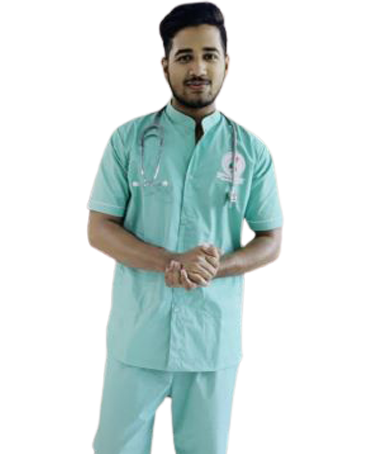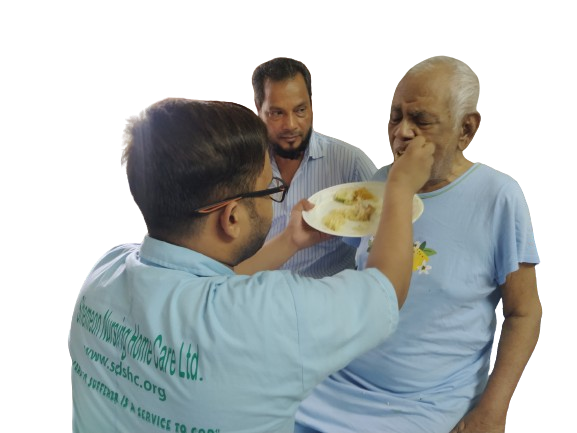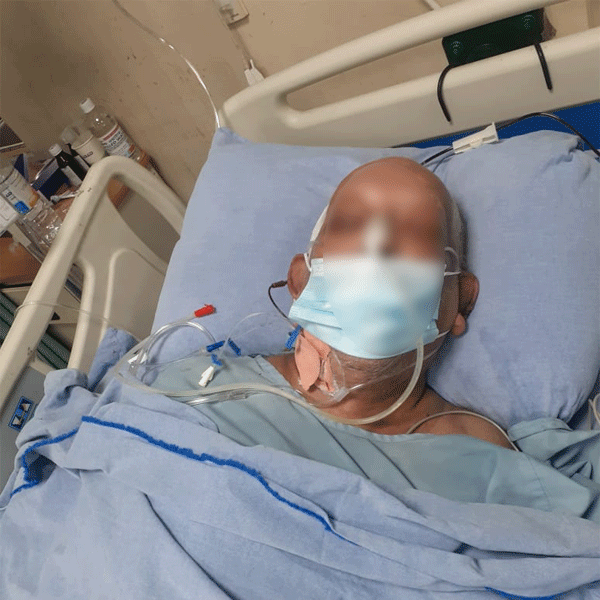Lab Test & X-ray ( Portable ), ECG ( At Home ) Urine Catheter, Bedsore Dressing
We are Committed to
All Clients are Supervised Regularly
Regular Home Visits. Evaluation and monitoring integrated nurses progress. Revising update nursing care plan. 24/7 Phone Support.
Your Choice
Your care is completely determind by you. You determind the type of care, How it is delivered and who delivers it.
SUPPORT FOR YOU 24/7
Our tem are on-call 24/7, so we can help you when you need us the most.
LEVEL : 1 (RN)
Critical Care Nursing : Where require continuous vitals monitoring such as ICU, HDU, NICU, PICU, Neuro - ICU , Patients,. Which covers Tracheostomy (TT) care, Pressure Sore Intake Output, PEG / NG, Feeding tube, Suction & Nebulization, CV / Dialysis Catheter Care, CPAP - BIPAP, Ventilated and daily others necessary nursing care.
LEVEL : 3 (NT)
Nursing Technician : General Nursing Certified Care Based experienced to manage daily bedside care needs. Such as NG Feed Suction, Chest Physiotherapy, Inaulin given and many more bedside care activities according to nursing care plan.


ALLOCATION
6 (Six) Hours.
8 (Eight) Hours.
12 (Twelve) Hours.
24 (Twenty four) Hours.
Emergency Medical Support.
LEVEL : 2 (RN)
General Care Nursing : Will take wound care to Basic life support care. eg ; NG Feeding, Suction & Nebulization, IV Cannual, Urinary Catheter, Minor Dressing, Medication and other routine nursing care.
LEVEL : 4 (PCA)
Nursing Technician : Community Care Assistant (CCA) : Designed to assist with your daily bedside Necessity. eg; Helping to bath, Oral Feeding, Diaper Changing, Positioning, Mobilization, Walking Support and many more.
Caregaiver have been screened PTB & Vaccinated.
Drug & alchol abuse background check.
Trained about basic infection control & CPR, AED.
Our Documentation
If you need urgent care, simply call our 24 hour emergency hotline.
Your personal case manager will ensure that you receive the best possible care.

Frequently Asked Questions
Portable lab tests and X-rays can include a variety of diagnostic tests that can be performed outside of a traditional medical facility setting. Some examples of portable lab tests include blood tests (such as complete blood count, glucose levels, and lipid panel), urinalysis, and rapid diagnostic tests for infectious diseases. Portable X-rays can include chest X-rays, musculoskeletal X-rays, and imaging of other body parts as needed. The specific types of tests and X-rays that can be performed using portable equipment may vary depending on the available technology and the healthcare provider offering the service.
At-home ECG monitoring involves the use of a portable ECG device that records the electrical activity of the heart over a period of time, typically 24 to 48 hours. The device is attached to the patient’s chest using small electrodes and can be worn while the patient goes about their normal activities. The recorded data is then sent to a healthcare provider for analysis and interpretation.
At-home ECG monitoring can benefit patients who have symptoms of heart arrhythmias or who are at risk for developing them. It can help detect irregular heartbeats, such as atrial fibrillation, which can increase the risk of stroke or heart failure. It can also help monitor the effectiveness of medications or other treatments for heart conditions.
At-home ECG monitoring may be recommended by a healthcare provider for patients who have symptoms such as palpitations, dizziness, or fainting. It may also be used for patients with a history of heart disease or other risk factors, such as high blood pressure, diabetes, or a family history of heart disease. The specific indications for at-home ECG monitoring may vary depending on the patient’s individual health status and medical history.
Urine catheterization is a medical procedure in which a thin, flexible tube is inserted through the urethra into the bladder to drain urine. Urine catheterization may be necessary for patients who are unable to urinate on their own due to a variety of medical conditions, such as urinary retention, neurogenic bladder, or bladder outlet obstruction.
Urine catheterization can also be used to collect a sterile urine sample for diagnostic testing or to monitor urine output in critically ill patients.
Urine catheterization should be performed safely and effectively by trained healthcare professionals to minimize the risk of complications, such as urinary tract infections or urethral injury. The procedure typically involves cleaning the genital area with an antiseptic solution, inserting the catheter into the urethra, and advancing it into the bladder while monitoring for signs of discomfort or resistance. Once the catheter is in place, urine can be drained into a collection bag.
Patients who require urine catheterization should be monitored closely for signs of complications, such as pain, swelling, or redness in the genital area, fever, or changes in urine output or color. They should also receive proper education on how to care for the catheter and prevent infection.
Bedsore dressings are medical devices used to prevent and treat pressure ulcers, also known as bedsores or pressure sores. Pressure ulcers are caused by prolonged pressure on the skin and underlying tissues, often as a result of immobility or being bedridden. The constant pressure can cause damage to the skin and tissues, leading to painful and potentially serious wounds.
Bedsore dressings are designed to protect the affected area from further damage and promote healing. They are made of specialized materials that provide cushioning, absorb moisture, and help maintain a moist wound environment to facilitate healing. Some dressings may also contain antimicrobial agents to help prevent infection.
Bedsore dressings should be selected based on the severity of the pressure ulcer, the location of the wound, and the patient’s individual needs. They may be changed regularly to ensure proper wound care and prevent infection.
In addition to using bedsore dressings, preventing pressure ulcers requires frequent repositioning and skin care for patients who are at risk. Healthcare professionals can provide education and support to help patients and caregivers prevent and manage pressure ulcers effectively.
The coverage for the services of Lab Test & X-ray (Portable), ECG (At Home), Urine Catheter, and Bedsore Dressing may vary depending on the patient’s insurance plan and their individual policy. Generally, these services may be covered by insurance if they are deemed medically necessary by a healthcare provider.
Patients can check with their insurance provider or healthcare provider to determine their coverage for these services. In some cases, prior authorization may be required before the services can be provided.
Patients can access these services through a variety of channels, such as hospitals, clinics, home health agencies, or medical equipment suppliers. Some services, such as at-home ECG monitoring, may require a prescription from a healthcare provider. Patients can also discuss their options with their healthcare provider to determine the best course of action based on their individual needs and circumstances.
What Our Client Says




















